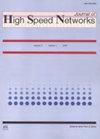基于域字典掩码的知识增强BERT
IF 1
Q4 COMPUTER SCIENCE, INFORMATION SYSTEMS
引用次数: 0
摘要
语义匹配是实现智能客户服务的关键技术之一。自BERT (Bidirectional Encoder Representations from Transformers)提出以来,对大规模预训练语言模型进行微调成为实现文本语义匹配的通用方法。然而,在实际应用中,BERT模型的准确性受到预训练语料库数量和目标领域专有名词数量的限制。针对这一问题,提出了一种基于领域词典的知识增强方法来屏蔽输入。首先,对于模块输入,我们使用关键字匹配来识别和屏蔽域内的单词。其次,利用自监督学习将目标领域的知识注入BERT模型。第三,我们使用公共数据集立法会mc和BQboost对BERT模型进行微调。最后,我们用一家金融公司的用户数据来测试模型的性能。实验结果表明,在实际应用中,我们的方法与BQboost结合使用后,精度平均提高了12.12%。本文章由计算机程序翻译,如有差异,请以英文原文为准。
Knowledge enhancement BERT based on domain dictionary mask
Semantic matching is one of the critical technologies for intelligent customer service. Since Bidirectional Encoder Representations from Transformers (BERT) is proposed, fine-tuning on a large-scale pre-training language model becomes a general method to implement text semantic matching. However, in practical application, the accuracy of the BERT model is limited by the quantity of pre-training corpus and proper nouns in the target domain. An enhancement method for knowledge based on domain dictionary to mask input is proposed to solve the problem. Firstly, for modul input, we use keyword matching to recognize and mask the word in domain. Secondly, using self-supervised learning to inject knowledge of the target domain into the BERT model. Thirdly, we fine-tune the BERT model with public datasets LCQMC and BQboost. Finally, we test the model’s performance with a financial company’s user data. The experimental results show that after using our method and BQboost, accuracy increases by 12.12% on average in practical applications.
求助全文
通过发布文献求助,成功后即可免费获取论文全文。
去求助
来源期刊

Journal of High Speed Networks
Computer Science-Computer Networks and Communications
CiteScore
1.80
自引率
11.10%
发文量
26
期刊介绍:
The Journal of High Speed Networks is an international archival journal, active since 1992, providing a publication vehicle for covering a large number of topics of interest in the high performance networking and communication area. Its audience includes researchers, managers as well as network designers and operators. The main goal will be to provide timely dissemination of information and scientific knowledge.
The journal will publish contributed papers on novel research, survey and position papers on topics of current interest, technical notes, and short communications to report progress on long-term projects. Submissions to the Journal will be refereed consistently with the review process of leading technical journals, based on originality, significance, quality, and clarity.
The journal will publish papers on a number of topics ranging from design to practical experiences with operational high performance/speed networks.
 求助内容:
求助内容: 应助结果提醒方式:
应助结果提醒方式:


